当前位置:网站首页>7. Scala process control
7. Scala process control
2022-07-05 00:33:00 【liangzai2048】
List of articles
Process control
Branch control if-else
Let the program execute selectively , There are three branches : Single branch 、 Double branch 、 Multiple branches
Single branch
- Basic grammar
if ( Conditional expression ) {
Execute code block
}
explain : When the conditional expression is true when , Will execute () Code for .
- Case study
demand : Enter the age of the person , If the comrade is younger than 18 year , The output “ A minor ”
Double branch
- Basic grammar
if ( Conditional expression ) {
Execute code block 1
} else {
Execute code block 2
}
explain : When the conditional expression is true when , Will execute () Code for
When the conditional expression is false when , Will execute else Code for
- Case study
demand : Enter the age of the person , If the comrade is younger than 18 year , The output “ A minor ”, Otherwise output “ adult ”
Multiple branches
- Basic grammar
if ( Conditional expression 1) {
Execute code block
} else if ( Conditional expression 2) {
Execute code block
}else if ( Conditional expression 3) {
Execute code block
}
...
else if ( Conditional expression n) {
Execute code block
} else {
Execute code block
}
explain : When the conditional expression is true when , Will execute () Code for
When the conditional expression is false when , Will execute else Code for
- Case study
demand :
When the age is less than or equal to 6 Time output “ childhood ”
When the age is less than 18 Time output “ A minor ”
When the age is less than 35 Time output “ adult ”
When the age is less than 60 Time output “ middle-aged ”
Otherwise output “ The elderly ”
package day04
import scala.io.StdIn
object Test01_IfElse {
def main(args: Array[String]): Unit = {
println(" Please enter your age :")
val age: Int = StdIn.readInt()
// 1、 Single branch
if (age >= 18) {
println(" adult ")
}
println("===============")
// 2、 Double branch
if (age >= 18) {
println(" adult ")
} else {
println(" A minor ")
}
println("=============")
// 3、 Multiple branches
if (age <= 6) {
println(" childhood ")
} else if (age < 18) {
println(" A minor ")
} else if (age < 35) {
println(" adult ")
} else if (age < 60) {
println(" middle-aged ")
} else {
println(" The elderly ")
}
}
}
Output results :
Please enter your age :
24
adult
===============
adult
=============
adult
The return value of the branch statement
package day04
import scala.io.StdIn
object Test01_IfElse {
def main(args: Array[String]): Unit = {
println(" Please enter your age ")
val age: Int = StdIn.readInt()
// The return value of the branch statement
val result: String = if (age <= 6) {
println(" childhood ")
" childhood "
} else if (age < 18) {
println(" A minor ")
" A minor "
} else if (age < 35) {
println(" adult ")
" adult "
} else if (age < 60) {
println(" middle-aged ")
" middle-aged "
} else {
println(" The elderly ")
" The elderly "
}
println("result:" + result)
}
}
Output results :
Please enter your age
24
adult
result: adult
package day04
import scala.io.StdIn
object Test01_IfElse {
def main(args: Array[String]): Unit = {
println(" Please enter your age ")
val age: Int = StdIn.readInt()
// The return value of the branch statement
val result1: String = if (age <= 6) {
println(" childhood ")
" childhood "
} else if (age < 18) {
println(" A minor ")
" A minor "
} else if (age < 35) {
println(" adult ")
" adult "
} else if (age < 60) {
println(" middle-aged ")
" middle-aged "
} else {
println(" The elderly ")
" The elderly "
}
println("result1:" + result1)
}
}
Output results :
Please enter your age
24
adult
result:()
package day04
import scala.io.StdIn
object Test01_IfElse {
def main(args: Array[String]): Unit = {
println(" Please enter your age ")
val age: Int = StdIn.readInt()
// The return value of the branch statement
val result2: Any = if (age <= 6) {
println(" childhood ")
" childhood "
} else if (age < 18) {
println(" A minor ")
age
} else if (age < 35) {
println(" adult ")
age
} else if (age < 60) {
println(" middle-aged ")
age
} else {
println(" The elderly ")
age
}
println("result2:" + result2)
}
}
Output results :
Please enter your age
25
adult
result2:25
Any You can return any type of return value
Scala There is no ternary operator

package day04
import scala.io.StdIn
object Test01_IfElse {
def main(args: Array[String]): Unit = {
println(" Please enter your age ")
val age: Int = StdIn.readInt()
// Scala There is no ternary operator String res2 = (age >=18)? " adult " : " A minor "
val res: String = if (age >= 18) {
" adult "
} else {
" A minor "
}
println("res" + res)
println("============")
val res2 = if (age >= 18) " adult " else " A minor "
println("res2" + res2)
// String res3 = (age >=18)? " adult " : " A minor "
}
}
Output results :
Please enter your age
25
res adult
============
res2 adult
Nested statement
package day04
import scala.io.StdIn
object Test01_IfElse {
def main(args: Array[String]): Unit = {
println(" Please enter your age :")
val age: Int = StdIn.readInt()
// 5、 Nesting branches
if (age >= 18) {
println(" adult ")
if (age >= 35) {
if (age >= 60) {
println(" The elderly ")
} else {
println(" middle-aged ")
}
}
} else {
println(" A minor ")
if (age <= 6) {
println(" childhood ")
}
}
}
}
Output results :
Please enter your age :
23
adult
For Cycle control
Scala Also for the for Loop, a common control structure, provides many features , these for The nature of the cycle is called for Derivation or for expression .
Range data cycle (To)
- Basic grammar
for (i < -1 to 3) {
print(i + " ")
}
println()
i The variable representing the loop ,<- Regulations to
i Will be from 1-3 loop , Close back and forth
Case study
demand : Output 5 sentence " handsome young man , You are handsome !"
package day04
object Test02_ForLoop {
def main(args: Array[String]): Unit = {
// java for grammar :for(int i = 0;i < 5;i++){System.out.println(i + ".hello world");}
// Range traversal
for (i <- 1 to 5) {
println(i + ". handsome young man , You are handsome !")
}
println("===============")
for (i <- 6.to(10)) {
println(i + ". handsome young man , You are handsome !")
}
println("===============")
for (i <- Range(1, 10)) {
println(i + ". handsome young man , You are handsome !")
}
println("===============")
for (i <- 1 until (10)) {
println(i + ". handsome young man , You are handsome !")
}
}
}
Output results :
G:\Java\jdk\bin\java.exe "-javaagent:F:\IDEA2021.3.1qiye\IntelliJ IDEA 2021.3.1\lib\idea_rt.jar=54760:F:\IDEA2021.3.1qiye\IntelliJ IDEA 2021.3.1\bin" -Dfile.encoding=UTF-8 -classpath G:\java\jdk\jre\lib\charsets.jar;G:\java\jdk\jre\lib\deploy.jar;G:\java\jdk\jre\lib\ext\access-bridge-64.jar;G:\java\jdk\jre\lib\ext\cldrdata.jar;G:\java\jdk\jre\lib\ext\dnsns.jar;G:\java\jdk\jre\lib\ext\jaccess.jar;G:\java\jdk\jre\lib\ext\jfxrt.jar;G:\java\jdk\jre\lib\ext\localedata.jar;G:\java\jdk\jre\lib\ext\nashorn.jar;G:\java\jdk\jre\lib\ext\sunec.jar;G:\java\jdk\jre\lib\ext\sunjce_provider.jar;G:\java\jdk\jre\lib\ext\sunmscapi.jar;G:\java\jdk\jre\lib\ext\sunpkcs11.jar;G:\java\jdk\jre\lib\ext\zipfs.jar;G:\java\jdk\jre\lib\javaws.jar;G:\java\jdk\jre\lib\jce.jar;G:\java\jdk\jre\lib\jfr.jar;G:\java\jdk\jre\lib\jfxswt.jar;G:\java\jdk\jre\lib\jsse.jar;G:\java\jdk\jre\lib\management-agent.jar;G:\java\jdk\jre\lib\plugin.jar;G:\java\jdk\jre\lib\resources.jar;G:\java\jdk\jre\lib\rt.jar;F:\IDEADEMO\ScalaLearnDemo\target\classes;G:\java\scala\scala-2.12.11\lib\scala-library.jar;G:\java\scala\scala-2.12.11\lib\scala-parser-combinators_2.12-1.0.7.jar;G:\java\scala\scala-2.12.11\lib\scala-reflect.jar;G:\java\scala\scala-2.12.11\lib\scala-swing_2.12-2.0.3.jar;G:\java\scala\scala-2.12.11\lib\scala-xml_2.12-1.0.6.jar day04.Test02_ForLoop
1. handsome young man , You are handsome !
2. handsome young man , You are handsome !
3. handsome young man , You are handsome !
4. handsome young man , You are handsome !
5. handsome young man , You are handsome !
===============
6. handsome young man , You are handsome !
7. handsome young man , You are handsome !
8. handsome young man , You are handsome !
9. handsome young man , You are handsome !
10. handsome young man , You are handsome !
===============
1. handsome young man , You are handsome !
2. handsome young man , You are handsome !
3. handsome young man , You are handsome !
4. handsome young man , You are handsome !
5. handsome young man , You are handsome !
6. handsome young man , You are handsome !
7. handsome young man , You are handsome !
8. handsome young man , You are handsome !
9. handsome young man , You are handsome !
===============
1. handsome young man , You are handsome !
2. handsome young man , You are handsome !
3. handsome young man , You are handsome !
4. handsome young man , You are handsome !
5. handsome young man , You are handsome !
6. handsome young man , You are handsome !
7. handsome young man , You are handsome !
8. handsome young man , You are handsome !
9. handsome young man , You are handsome !
A collection of traverse
package day04
object Test02_ForLoop {
def main(args: Array[String]): Unit = {
// 2、 A collection of traverse
for (i <- Array(12, 34, 56, 23)) {
println(i)
}
for (i <- List(12, 34, 56, 23)) {
println(i)
}
for (i <- Set(12, 34, 56, 23)) {
println(i)
}
}
}
Running results :
12
34
56
23
12
34
56
23
12
34
56
23
Cycle guard
- Basic grammar
for (i <- 1 to 3 if i != 2) {
println(i + " ")
}
Cycle guard , Cycle protection mode ( Also known as conditional judgment , The guards ). The protection type is true Then go inside the circulatory body , by false Then skip , Be similar to continue(Scala There is no )
The above code is equivalent to
for (i <- 1 to 3) {
if (1 != 2) {
println(i + " ")
}
}
- Case study
package day04
object Test02_ForLoop {
def main(args: Array[String]): Unit = {
// 3、 Cycle guard
for (i <- 1 to 10) {
if (i != 5) {
println(i)
}
}
println("===============")
for (i <- 1 to 10 if i != 5) {
println(i)
}
}
}
Output results :
1
2
3
4
6
7
8
9
10
===============
1
2
3
4
6
7
8
9
10
Cycle step
Step cannot be 0
package day04
object Test02_ForLoop {
def main(args: Array[String]): Unit = {
// 4、 Cycle step
for (i <- 1 to 10 by 2) {
println(i)
}
println("===============")
for (i <- 13 to 30 by 3) {
println(i)
}
println("===============")
for (i <- 30 to 13 by -2) {
println(i)
}
println("===============")
for (i <- 10 to 1 by -1) {
println(i)
}
println("===============")
for (i <- 1 to 10 reverse) {
println(i)
}
println("===============")
for (data <- 1.0 to 10.0 by 0.5) {
println(data)
}
}
}
Output results :
1
3
5
7
9
===============
13
16
19
22
25
28
===============
30
28
26
24
22
20
18
16
14
===============
10
9
8
7
6
5
4
3
2
1
===============
10
9
8
7
6
5
4
3
2
1
===============
1.0
1.5
2.0
2.5
3.0
3.5
4.0
4.5
5.0
5.5
6.0
6.5
7.0
7.5
8.0
8.5
9.0
9.5
10.0
Nested loop
- Basic grammar
for (i <-1 to 3; j <- 1 to 3) {
println("i = " + i + "j =" + j)
}
No keywords , So we must add ; To cut off logic
- The above code is equivalent to
for (i <- 1 to 3) {
for (j <-1 to 3) {
println("i = " + i + "j =" + j)
}
}
- Case study
package day04
object Test02_ForLoop {
def main(args: Array[String]): Unit = {
// 5、 A nested loop
for (i <- 1 to 3) {
for (j <- 1 to 3) {
println("i = " + i + " j =" + j)
}
}
println("===============")
for (i <- 1 to 3; j <- 1 to 3) {
println("i = " + i + " j =" + j)
}
}
}
Output results :
i = 1 j =1
i = 1 j =2
i = 1 j =3
i = 2 j =1
i = 2 j =2
i = 2 j =3
i = 3 j =1
i = 3 j =2
i = 3 j =3
===============
i = 1 j =1
i = 1 j =2
i = 1 j =3
i = 2 j =1
i = 2 j =2
i = 2 j =3
i = 3 j =1
i = 3 j =2
i = 3 j =3
multiplication table
package day04
// Output the multiplication table
object Test03_Practice_MulTable {
def main(args: Array[String]): Unit = {
for (i <- 1 to 9) {
for (j <- 1 to i) {
print(s"$j * $i = ${i * j}\t")
}
println()
}
println("=========================")
// Abbreviation
for (i <- 1 to 9; j <- 1 to i) {
print(s"$j * $i = ${i * j}\t")
if (j == i) println()
}
}
}
Output results :
G:\Java\jdk\bin\java.exe "-javaagent:F:\IDEA2021.3.1qiye\IntelliJ IDEA 2021.3.1\lib\idea_rt.jar=55763:F:\IDEA2021.3.1qiye\IntelliJ IDEA 2021.3.1\bin" -Dfile.encoding=UTF-8 -classpath G:\java\jdk\jre\lib\charsets.jar;G:\java\jdk\jre\lib\deploy.jar;G:\java\jdk\jre\lib\ext\access-bridge-64.jar;G:\java\jdk\jre\lib\ext\cldrdata.jar;G:\java\jdk\jre\lib\ext\dnsns.jar;G:\java\jdk\jre\lib\ext\jaccess.jar;G:\java\jdk\jre\lib\ext\jfxrt.jar;G:\java\jdk\jre\lib\ext\localedata.jar;G:\java\jdk\jre\lib\ext\nashorn.jar;G:\java\jdk\jre\lib\ext\sunec.jar;G:\java\jdk\jre\lib\ext\sunjce_provider.jar;G:\java\jdk\jre\lib\ext\sunmscapi.jar;G:\java\jdk\jre\lib\ext\sunpkcs11.jar;G:\java\jdk\jre\lib\ext\zipfs.jar;G:\java\jdk\jre\lib\javaws.jar;G:\java\jdk\jre\lib\jce.jar;G:\java\jdk\jre\lib\jfr.jar;G:\java\jdk\jre\lib\jfxswt.jar;G:\java\jdk\jre\lib\jsse.jar;G:\java\jdk\jre\lib\management-agent.jar;G:\java\jdk\jre\lib\plugin.jar;G:\java\jdk\jre\lib\resources.jar;G:\java\jdk\jre\lib\rt.jar;F:\IDEADEMO\ScalaLearnDemo\target\classes;G:\java\scala\scala-2.12.11\lib\scala-library.jar;G:\java\scala\scala-2.12.11\lib\scala-parser-combinators_2.12-1.0.7.jar;G:\java\scala\scala-2.12.11\lib\scala-reflect.jar;G:\java\scala\scala-2.12.11\lib\scala-swing_2.12-2.0.3.jar;G:\java\scala\scala-2.12.11\lib\scala-xml_2.12-1.0.6.jar day04.Test03_Practice_MulTable
1 * 1 = 1
1 * 2 = 2 2 * 2 = 4
1 * 3 = 3 2 * 3 = 6 3 * 3 = 9
1 * 4 = 4 2 * 4 = 8 3 * 4 = 12 4 * 4 = 16
1 * 5 = 5 2 * 5 = 10 3 * 5 = 15 4 * 5 = 20 5 * 5 = 25
1 * 6 = 6 2 * 6 = 12 3 * 6 = 18 4 * 6 = 24 5 * 6 = 30 6 * 6 = 36
1 * 7 = 7 2 * 7 = 14 3 * 7 = 21 4 * 7 = 28 5 * 7 = 35 6 * 7 = 42 7 * 7 = 49
1 * 8 = 8 2 * 8 = 16 3 * 8 = 24 4 * 8 = 32 5 * 8 = 40 6 * 8 = 48 7 * 8 = 56 8 * 8 = 64
1 * 9 = 9 2 * 9 = 18 3 * 9 = 27 4 * 9 = 36 5 * 9 = 45 6 * 9 = 54 7 * 9 = 63 8 * 9 = 72 9 * 9 = 81
1 * 1 = 1
1 * 2 = 2 2 * 2 = 4
1 * 3 = 3 2 * 3 = 6 3 * 3 = 9
1 * 4 = 4 2 * 4 = 8 3 * 4 = 12 4 * 4 = 16
1 * 5 = 5 2 * 5 = 10 3 * 5 = 15 4 * 5 = 20 5 * 5 = 25
1 * 6 = 6 2 * 6 = 12 3 * 6 = 18 4 * 6 = 24 5 * 6 = 30 6 * 6 = 36
1 * 7 = 7 2 * 7 = 14 3 * 7 = 21 4 * 7 = 28 5 * 7 = 35 6 * 7 = 42 7 * 7 = 49
1 * 8 = 8 2 * 8 = 16 3 * 8 = 24 4 * 8 = 32 5 * 8 = 40 6 * 8 = 48 7 * 8 = 56 8 * 8 = 64
1 * 9 = 9 2 * 9 = 18 3 * 9 = 27 4 * 9 = 36 5 * 9 = 45 6 * 9 = 54 7 * 9 = 63 8 * 9 = 72 9 * 9 = 81
Introduce variables
- Basic grammar
for (i <- 1 to 3;j = 4 - i) {
println("i =" + i + " j =" + j)
}
- for When there are more than one expression in a row of the derivation , So add ; To cut off logic
- for The derivation has an unwritten Convention : When for Use parentheses when the derivation contains only a single expression , When multiple expressions are included , Usually one expression per line , And use curly braces instead of parentheses , as follows
for {
i <- 1 to 3
j = 4 - i
} {
println("i =" + i + " j =" + j)
}
- Case study
package day04
object Test02_ForLoop {
def main(args: Array[String]): Unit = {
// 5、 A nested loop
for (i <- 1 to 3) {
for (j <- 1 to 3) {
println("i = " + i + " j =" + j)
}
}
println("===============")
for (i <- 1 to 3; j <- 1 to 3) {
println("i = " + i + " j =" + j)
}
println("===============")
// 6、 Loop introduces variables
for (i <- 1 to 10) {
val j = 10 - i
println("i =" + i + " j =" + j)
}
println("===============")
for (i <- 1 to 10; j = 10 - i) {
println("i =" + i + " j =" + j)
}
}
}
Output results :
i =1 j =9
i =2 j =8
i =3 j =7
i =4 j =6
i =5 j =5
i =6 j =4
i =7 j =3
i =8 j =2
i =9 j =1
i =10 j =0
===============
i =1 j =9
i =2 j =8
i =3 j =7
i =4 j =6
i =5 j =5
i =6 j =4
i =7 j =3
i =8 j =2
i =9 j =1
i =10 j =0
Nine story demon tower
package day04
object Test_04Practice_Pyramid {
def main(args: Array[String]): Unit = {
for (i <- 1 to 9) {
val stars = 2 * i -1
val spaces = 9 - i
println(" " * spaces + "*" * stars)
}
println("==========")
for (i <- 1 to 9;stars = 2 * i;spaces = 9 -i) {
println(" " * spaces + "*" * stars)
}
println("==========")
for (stars <- 1 to 17 by 2;spaces = (17 - stars) / 2) {
println(" " * spaces + "*" * stars)
}
}
}
Output results :
G:\Java\jdk\bin\java.exe "-javaagent:F:\IDEA2021.3.1qiye\IntelliJ IDEA 2021.3.1\lib\idea_rt.jar=56097:F:\IDEA2021.3.1qiye\IntelliJ IDEA 2021.3.1\bin" -Dfile.encoding=UTF-8 -classpath G:\java\jdk\jre\lib\charsets.jar;G:\java\jdk\jre\lib\deploy.jar;G:\java\jdk\jre\lib\ext\access-bridge-64.jar;G:\java\jdk\jre\lib\ext\cldrdata.jar;G:\java\jdk\jre\lib\ext\dnsns.jar;G:\java\jdk\jre\lib\ext\jaccess.jar;G:\java\jdk\jre\lib\ext\jfxrt.jar;G:\java\jdk\jre\lib\ext\localedata.jar;G:\java\jdk\jre\lib\ext\nashorn.jar;G:\java\jdk\jre\lib\ext\sunec.jar;G:\java\jdk\jre\lib\ext\sunjce_provider.jar;G:\java\jdk\jre\lib\ext\sunmscapi.jar;G:\java\jdk\jre\lib\ext\sunpkcs11.jar;G:\java\jdk\jre\lib\ext\zipfs.jar;G:\java\jdk\jre\lib\javaws.jar;G:\java\jdk\jre\lib\jce.jar;G:\java\jdk\jre\lib\jfr.jar;G:\java\jdk\jre\lib\jfxswt.jar;G:\java\jdk\jre\lib\jsse.jar;G:\java\jdk\jre\lib\management-agent.jar;G:\java\jdk\jre\lib\plugin.jar;G:\java\jdk\jre\lib\resources.jar;G:\java\jdk\jre\lib\rt.jar;F:\IDEADEMO\ScalaLearnDemo\target\classes;G:\java\scala\scala-2.12.11\lib\scala-library.jar;G:\java\scala\scala-2.12.11\lib\scala-parser-combinators_2.12-1.0.7.jar;G:\java\scala\scala-2.12.11\lib\scala-reflect.jar;G:\java\scala\scala-2.12.11\lib\scala-swing_2.12-2.0.3.jar;G:\java\scala\scala-2.12.11\lib\scala-xml_2.12-1.0.6.jar day04.Test_04Practice_Pyramid
*
***
*****
*******
*********
***********
*************
***************
*****************
==========
**
****
******
********
**********
************
**************
****************
******************
==========
*
***
*****
*******
*********
***********
*************
***************
*****************
Loop return value
- Basic grammar
val res = for (i <- 1 to 10) yield i
println(res)
explain : Return the results processed during traversal to a new Vector Collection , Use yield keyword .
Be careful : Rarely used in development
- Case study
demand : Multiply all values in the original data by 2, And return the data to a new set .
package day04
object Test02_ForLoop {
def main(args: Array[String]): Unit = {
// 6、 Loop return value
val a: Unit = for (i <- 1 to 10) {
i
}
println("a =" + a)
println("===============")
val b = for (i <- 1 to 10) {
i
}
println("b =" + b)
println("===============")
val c = for (i <- 1 to 10) yield i
println("c =" + c)
println("===============")
val ints = for (i <- 1 to 10) yield i
val d = ints
println("d =" + d)
println("===============")
val e: IndexedSeq[Int] = for (i <- 1 to 10) yield i
println("e =" + e)
}
}
Output results :
a =()
===============
b =()
===============
c =Vector(1, 2, 3, 4, 5, 6, 7, 8, 9, 10)
===============
d =Vector(1, 2, 3, 4, 5, 6, 7, 8, 9, 10)
===============
e =Vector(1, 2, 3, 4, 5, 6, 7, 8, 9, 10)
While and do…While Cycle control
While and do…While The use of and Java The usage is the same in language .
While Cycle control
- Basic grammar
Loop variable initialization
while( The loop condition ) {
The loop body ( sentence )
Loop variable iteration
}
explain :
1、 A loop condition is an expression that returns a Boolean value
2、while A loop is to judge before executing a statement
3、 And for The statements are different ,while Statement has no return value , The whole while The result of the statement is Unit type ()
4、 because while There is no return value , So when you want to use this statement to calculate the return result , It's inevitable to use variables , Variables need to be declared in while The outside of the cycle , So it's equivalent to the inside of the loop having an impact on the outside variables , So... Is not recommended , It's recommended for loop .
Case study
package day04
object Test05_WhileLoop {
def main(args: Array[String]): Unit = {
// while
var a: Int = 10
while (a >= 1) {
println(" This is a while loop : " + a)
a -= 1
}
var b: Int = 0
do {
println(" This is a do-while loop : " + b)
b -= 1
} while (b > 0)
}
}
Output results :
This is a while loop : 10
This is a while loop : 9
This is a while loop : 8
This is a while loop : 7
This is a while loop : 6
This is a while loop : 5
This is a while loop : 4
This is a while loop : 3
This is a while loop : 2
This is a while loop : 1
This is a do-while loop : 0
Cycle break
- Basic explanation
Scala The built-in control structure specifically removes break and continue, In order to better adapt to functional programming , It is recommended to use the functional style to solve break and continue The function of , Not a keyword .Scala Use in breakable Control structure to achieve break and continue function .
- Case study
demand :
1、 Throw an exception , Exit loop
2、 Use Scala Medium Breaks Class break Method , Throw and catch exceptions
package day04
import scala.util.control.Breaks
object Test06_Break {
def main(args: Array[String]): Unit = {
// 1、 Throw an exception , Exit loop
try {
for (i <- 0 until 5) {
if (i == 3)
throw new RuntimeException
println(i)
}
} catch {
case e: Exception => // Don't do anything? , Just exit the loop
}
println("=================")
// 2、 Use Scala Medium Breaks Class break Method , Throw and catch exceptions
Breaks.breakable(
for (i <- 0 until 5) {
if (i == 3)
Breaks.break()
println(i)
}
)
println(" This is the code outside the loop ")
}
}
Running results :
0
1
2
=================
0
1
2
This is the code outside the loop
breakable Original code
def breakable(op: => Unit) {
try {
op
} catch {
case ex: BreakControl =>
if (ex ne breakException) throw ex
}
}
Optimize
Guide pack
import scala.util.control.Breaks._
package day04
import scala.util.control.Breaks
import scala.util.control.Breaks._
object Test06_Break {
def main(args: Array[String]): Unit = {
// 2、 Use Scala Medium Breaks Class break Method , Throw and catch exceptions
breakable(
for (i <- 0 until 5) {
if (i == 3)
break()
println(i)
}
)
println(" This is the code outside the loop ")
}
}
Running results :
0
1
2
This is the code outside the loop
After all ! If you like liangzai's articles, please comment below !( •̀ ω •́ )*
边栏推荐
- Every time I look at the interface documents of my colleagues, I get confused and have a lot of problems...
- Recursive execution mechanism
- 【C】 (written examination questions) pointer and array, pointer
- 雅思考试流程、需要具体注意些什么、怎么复习?
- XML的解析
- (脚本)一键部署redis任意版本 —— 筑梦之路
- Ap8022 switching power supply small household appliances ACDC chip offline switching power supply IC
- Operator explanation
- 两个数相互替换
- NPM install error forced installation
猜你喜欢
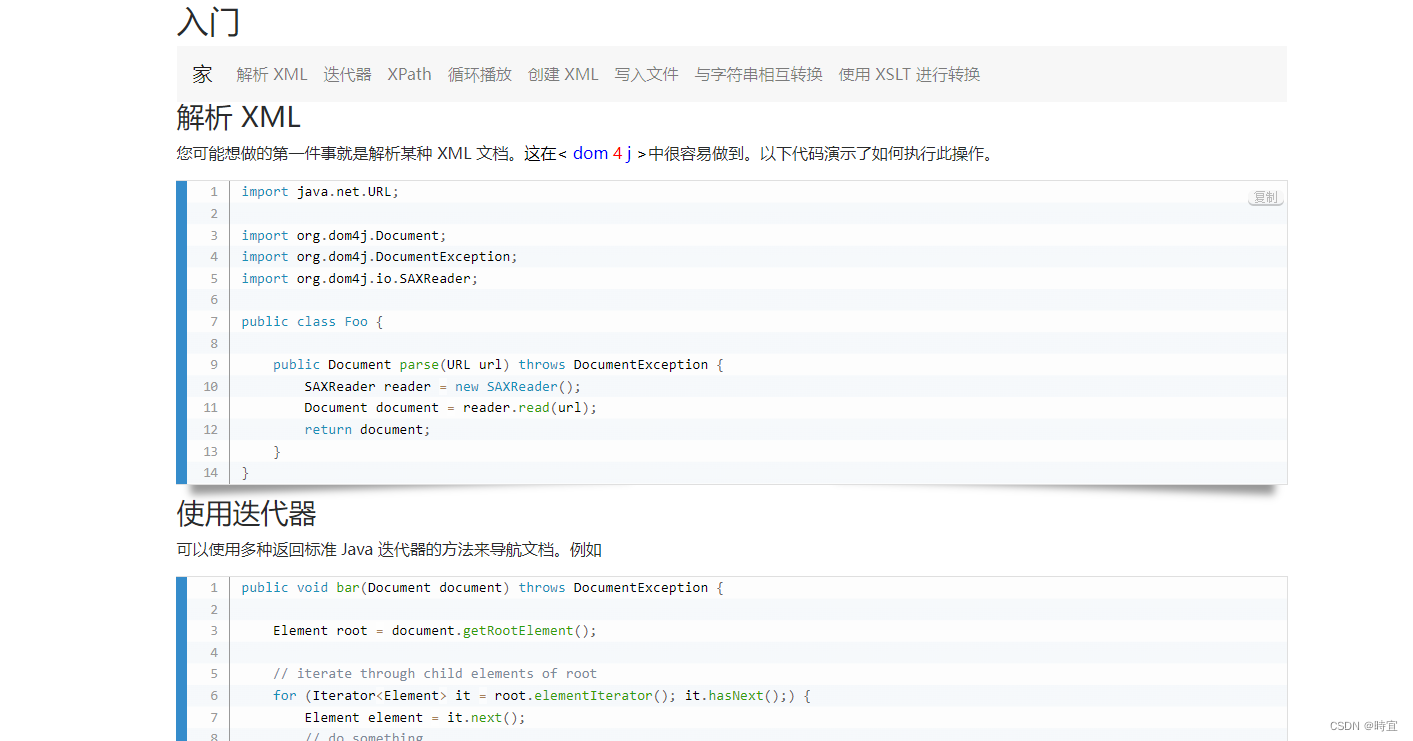
XML的解析
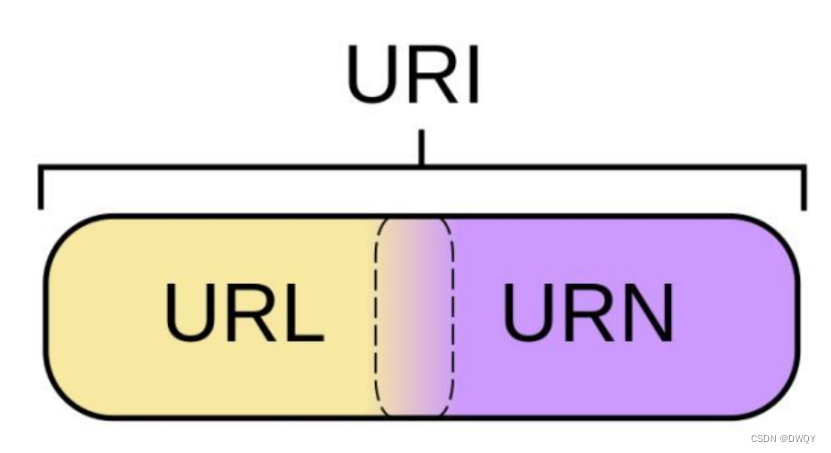
URLs and URIs

Oracle case: SMON rollback exception causes instance crash
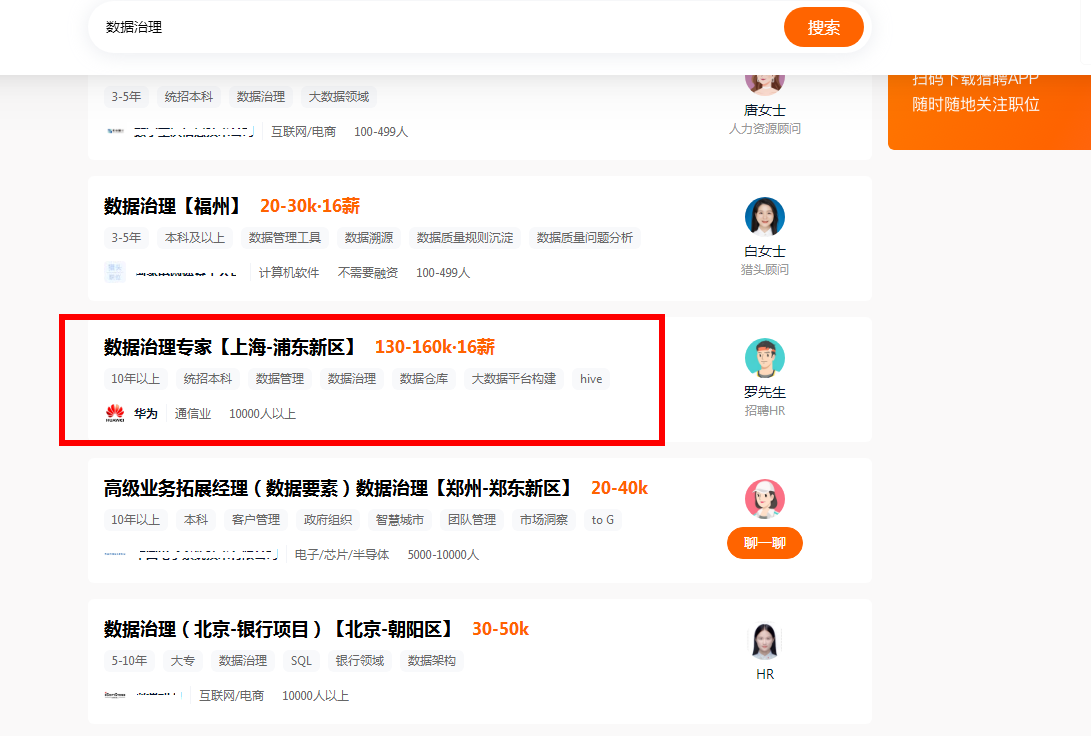
华为200万年薪聘请数据治理专家!背后的千亿市场值得关注
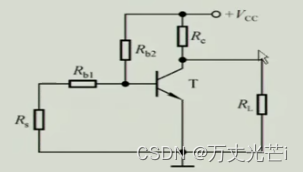
基本放大电路的学习
![[paper reading] cavemix: a simple data augmentation method for brain vision segmentation](/img/41/eb790e7419a158e985fa503bd7dc17.png)
[paper reading] cavemix: a simple data augmentation method for brain vision segmentation
![[论文阅读] CarveMix: A Simple Data Augmentation Method for Brain Lesion Segmentation](/img/41/eb790e7419a158e985fa503bd7dc17.png)
[论文阅读] CarveMix: A Simple Data Augmentation Method for Brain Lesion Segmentation

【雅思阅读】王希伟阅读P4(matching1)

The company needs to be monitored. How do ZABBIX and Prometheus choose? That's the right choice!
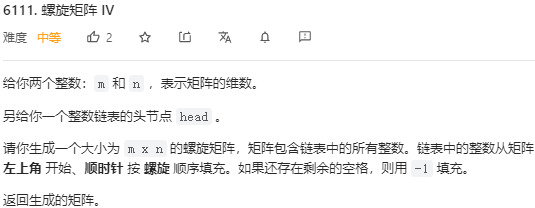
2022.07.03 (lc_6111_counts the number of ways to place houses)
随机推荐
Kibana index, mapping, document operation
他做国外LEAD,用了一年时间,把所有房贷都还清了
Cross domain request
Business implementation - the log is written to the same row of data
22-07-02周总结
GDB common commands
The difference between string STR and new string
(脚本)一键部署redis任意版本 —— 筑梦之路
A new method for analyzing the trend chart of London Silver
Oracle case: SMON rollback exception causes instance crash
TS快速入门-函数
Leetcode70 (Advanced), 322
uniapp上传头像
Hologres query management and timeout processing
If you open an account of Huatai Securities by stock speculation, is it safe to open an account online?
The waterfall flow layout demo2 (method 2) used by the uniapp wechat applet (copy and paste can be used without other processing)
Date time type and format in MySQL
Life is changeable, and the large intestine covers the small intestine. This time, I can really go home to see my daughter-in-law...
[selenium automation] common notes
Ap8022 switching power supply small household appliances ACDC chip offline switching power supply IC